Ediz Hook Revegetation
The MRC partnered with the Lower Elwha Klallam Tribe in March 2024 and 2025 to revegetate areas of Ediz Hook that the Tribe had restored with beach nourishment.
The Lower Elwha Klallam Tribe has long been stewarding the nearshore area on Ediz Hook, and in 2021 took on a particularly large restoration project. This complex work included the removal of shoreline armoring, and its replacement with more natural beach logs and sand. The goal was to restore high quality habitat for seabirds and forage fish, and to improve recreation opportunities in this culturally important area.
Because that project included the addition of new sand, known as beach nourishment, the MRC partnered with the Lower Elwha Klallam Tribe and the Clallam Conservation District to revegetate the restored areas in March 2024. Native plants create rich and beautiful backshore habitat for seabirds, as well as securing sand in place with their roots to moderate natural erosion.
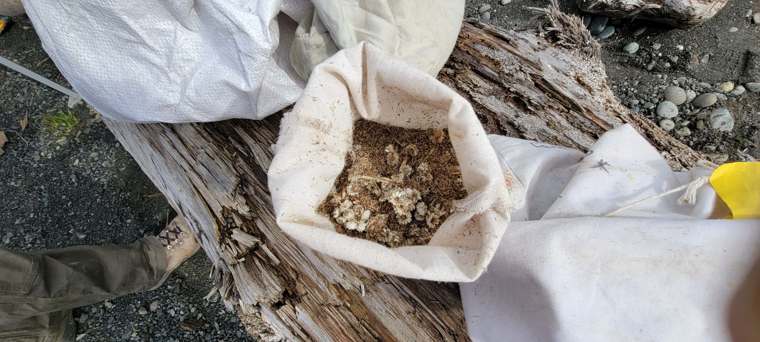
Bag of seed to be sown. Photo credit Tiffany Royal, Northwest Indian Fisheries Commission
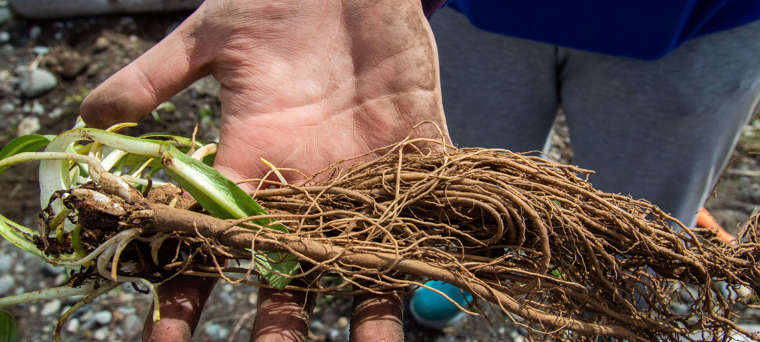
An example of the 3,000 plants added in March 2024. Photo credit Tiffany Royal, Northwest Indian Fisheries Commission
In March 2024, 59 volunteers worked together with staff to add 3,000 native nearshore plants and sow 5 pounds of seed. Plants for 2024 included pearly everlasting, dune grass, mugwort, beach strawberries, and gumweed.
Because of the incredible outpouring of volunteer effort, the group was even able to add plants to an additional area of Ediz Hook managed by the City of Port Angeles. Special thanks to project lead Helle Andersen, and to MRC member and Lower Elwha Klallam Tribe Revegetation Manager Allyce Miller for their time and expertise.
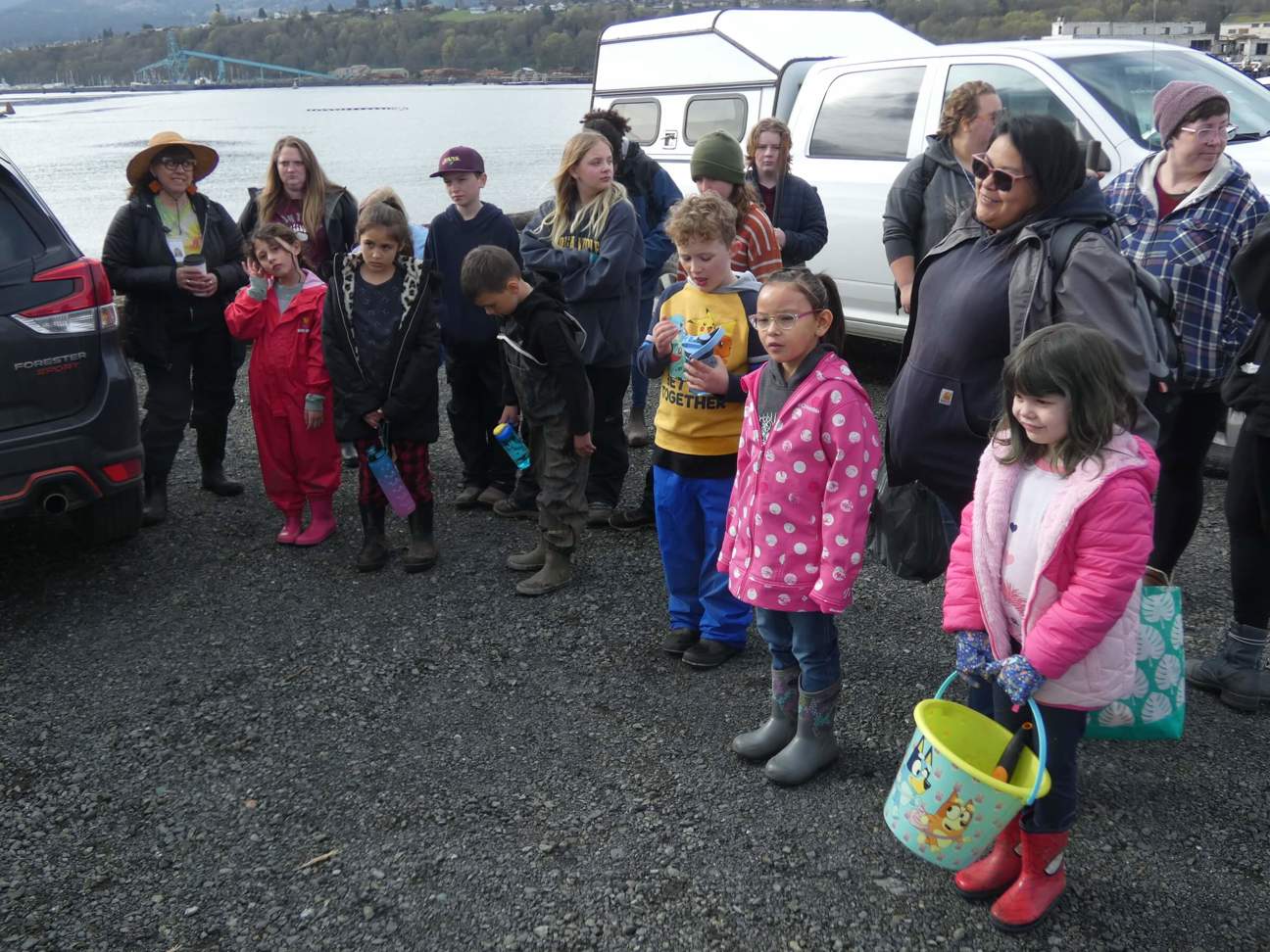
Young volunteers and their chaperones gather around to listen to planting instructions. Photo credit Helle Andersen.
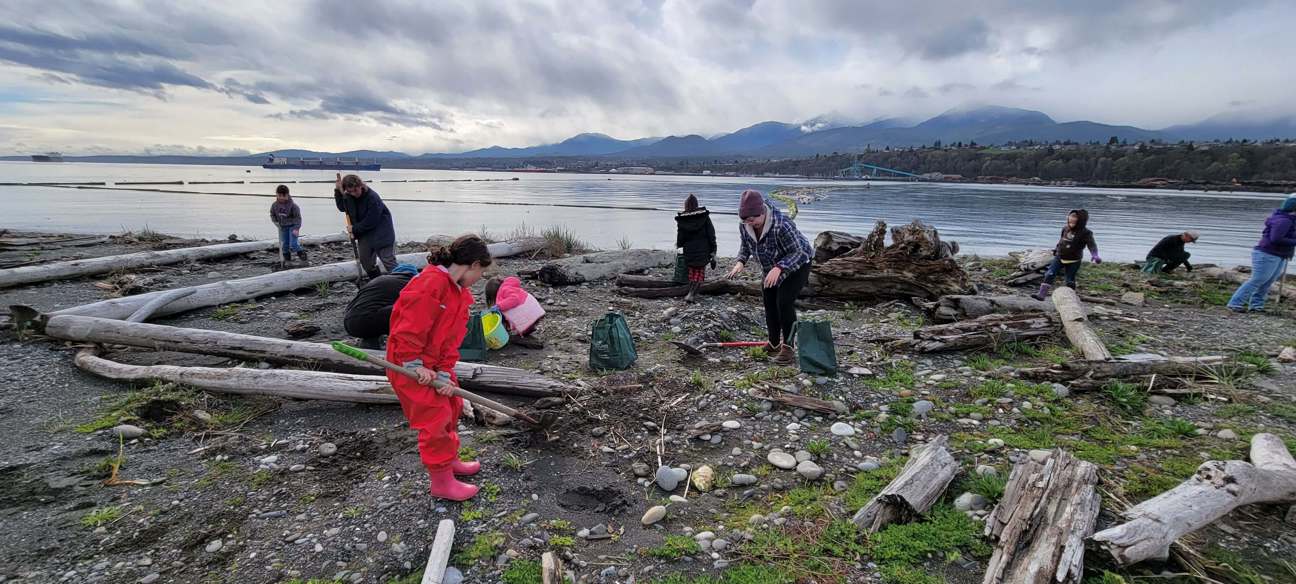
Volunteers begin the day by digging holes for the nearshore plants. Photo credit Rebecca Mahan.
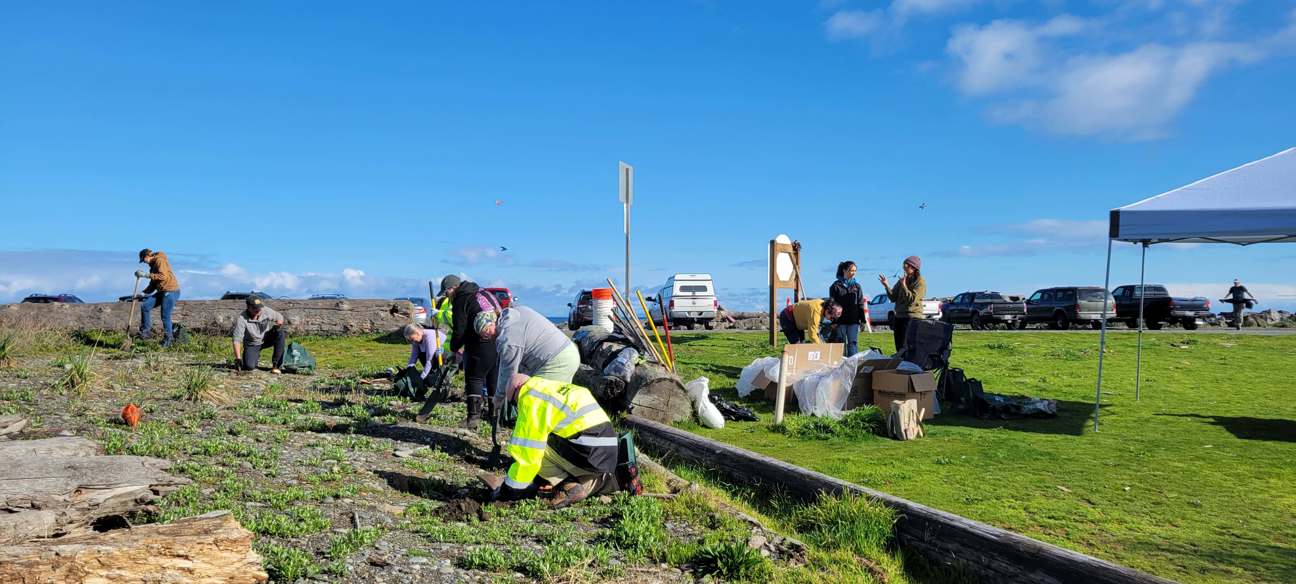
Volunteers carefully worked to add plants to areas that did not already have them. Photo credit Rebecca Mahan.
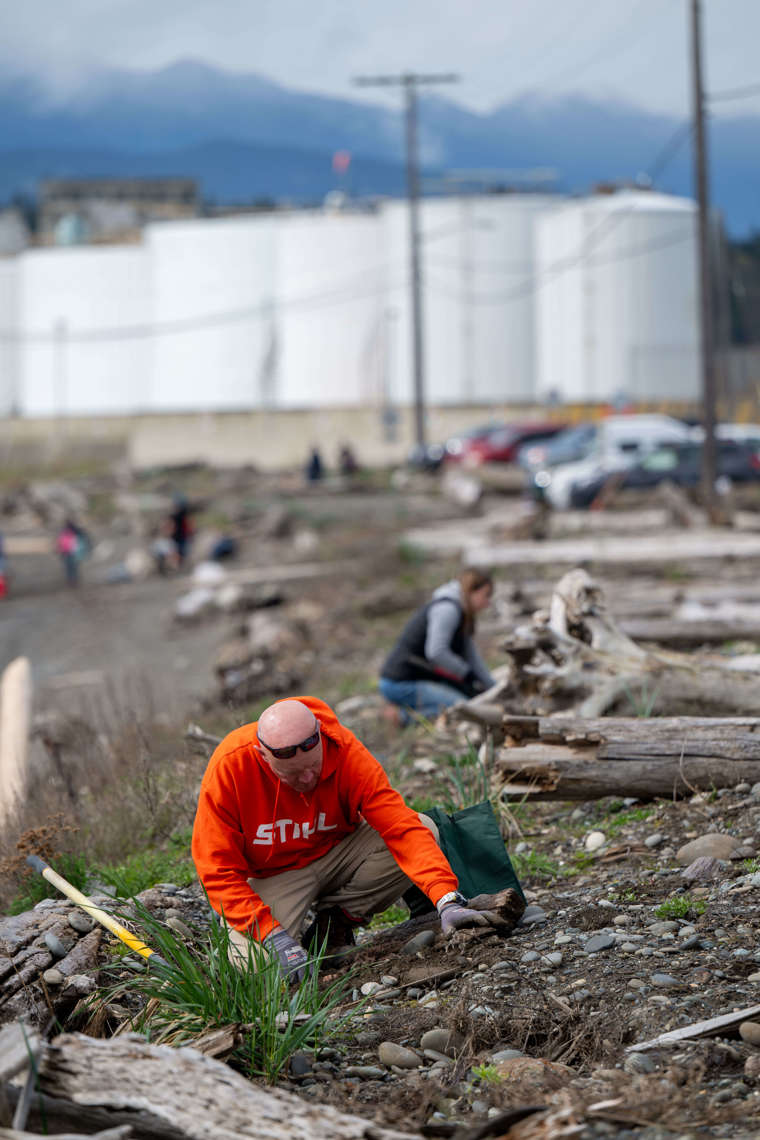
Volunteers work on planting along the extra section of Ediz Hook managed by the City of Port Angeles. Photo credit Tiffany Royal, Northwest Indian Fisheries Commission.
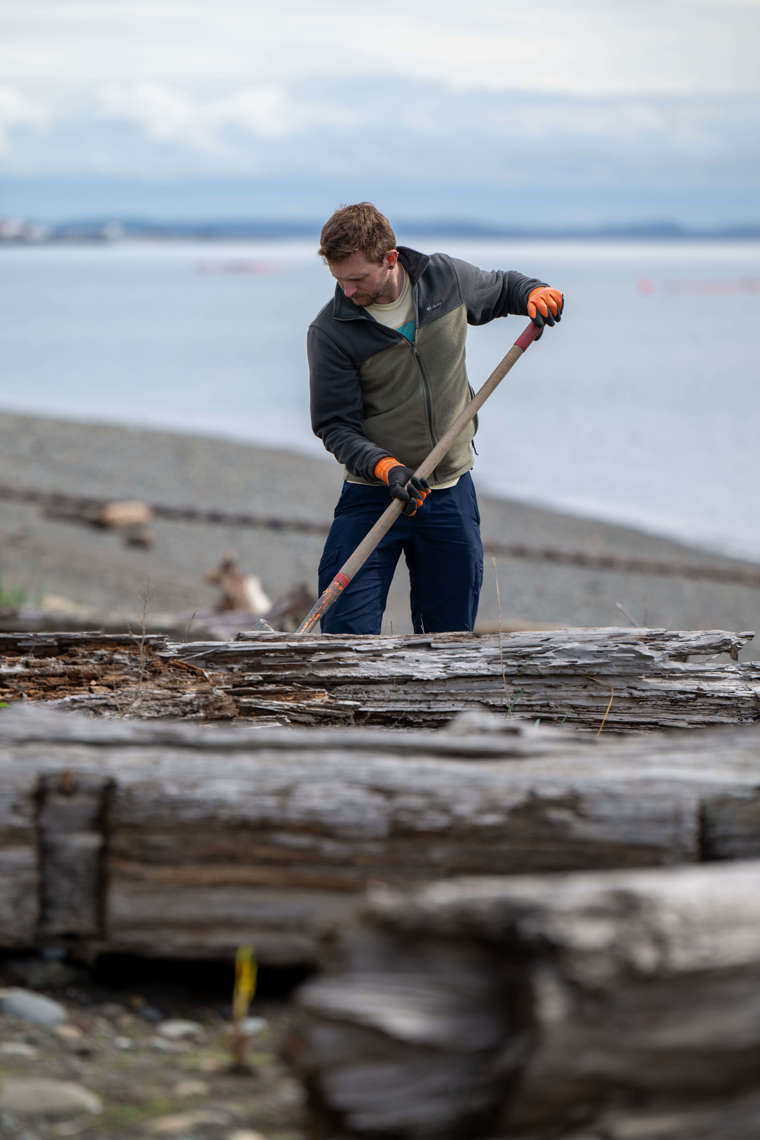
A volunteer digs a deep hole to provide for long roots. Photo credit Tiffany Royal, Northwest Indian Fisheries Commission.
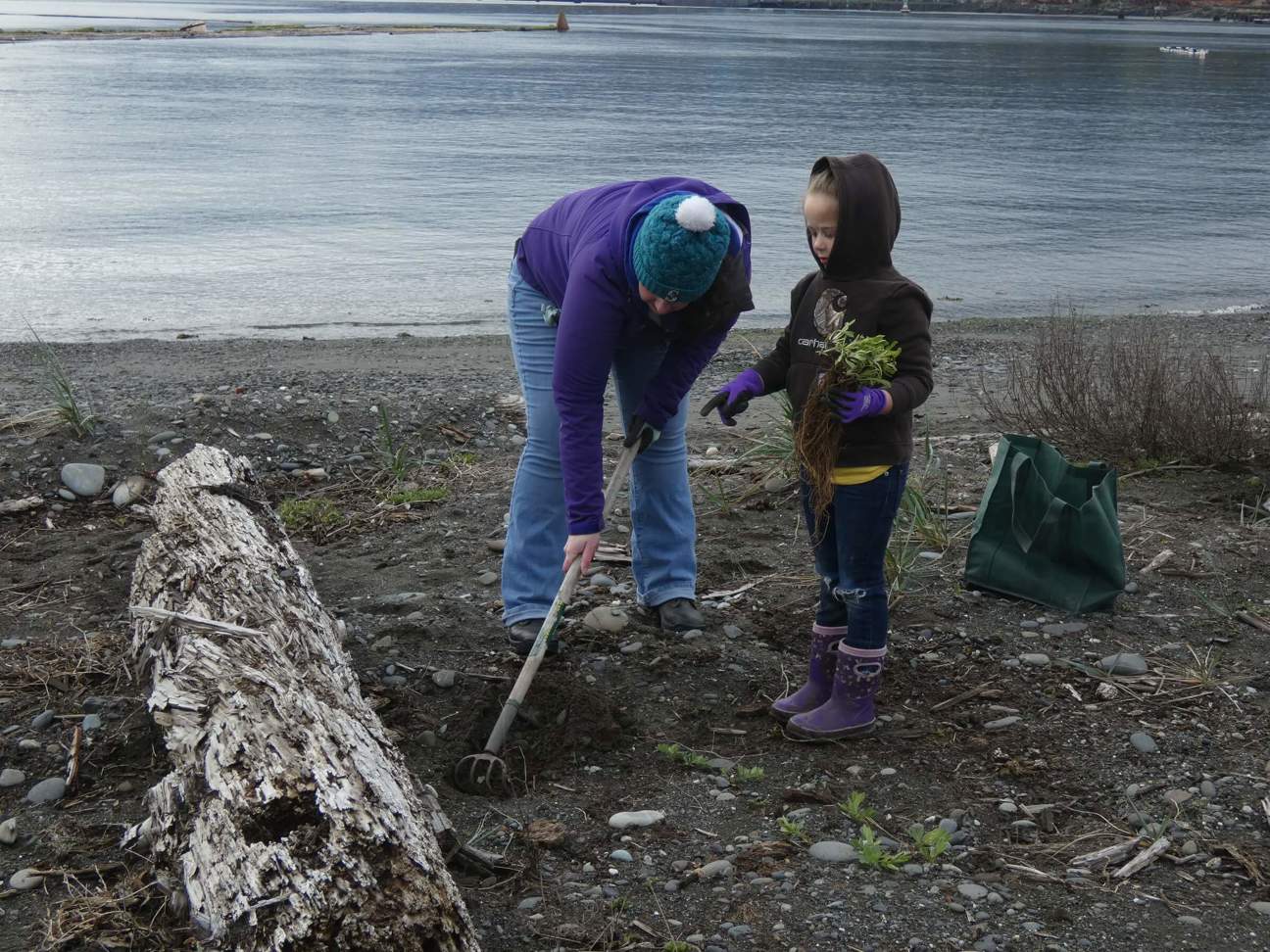
A young volunteer supervises their assistant digging a large hole. Photo credit Helle Andersen.
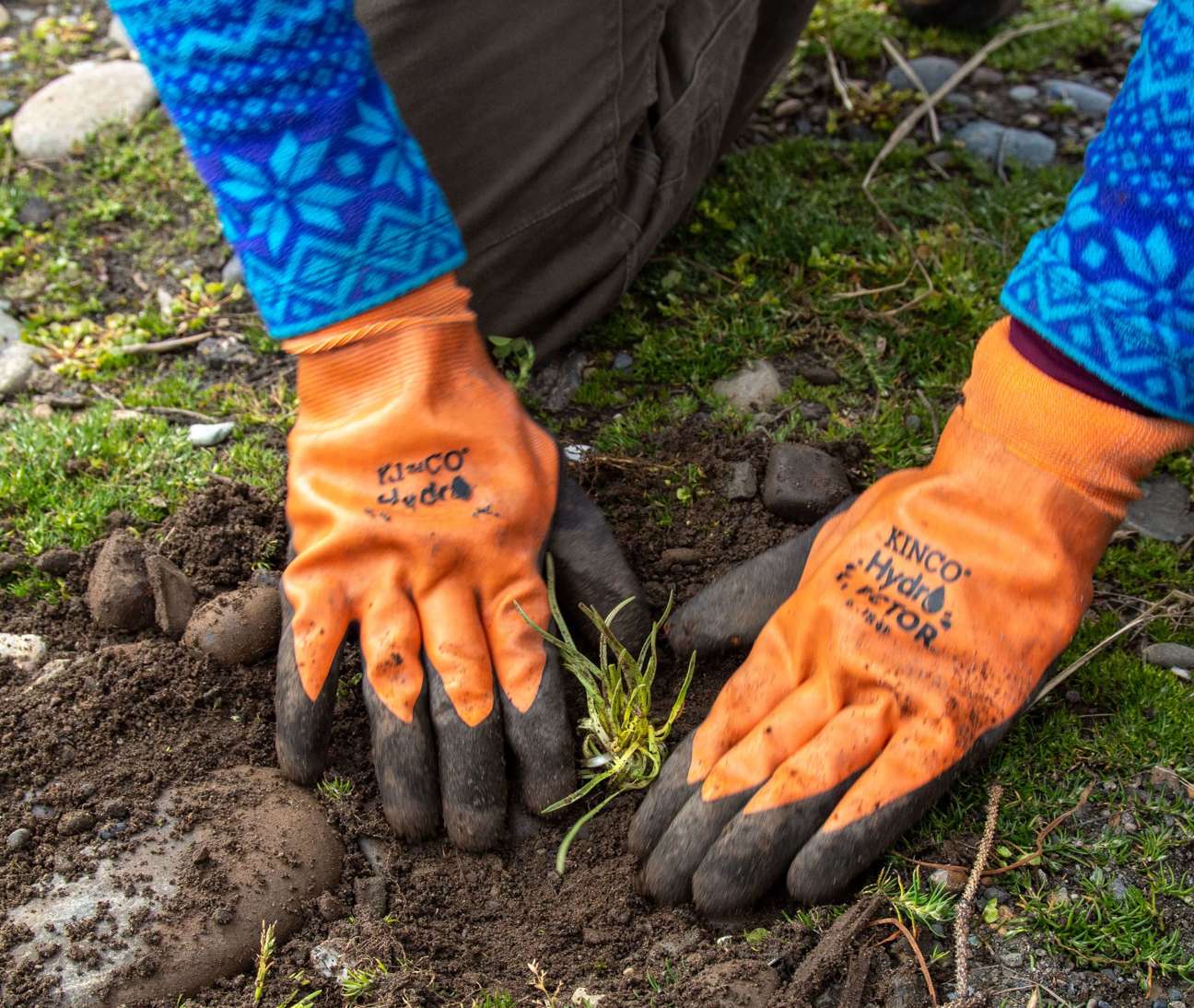
Allyce Miller, MRC Alternate Representative for the Lower Elwha Klallam Tribe, presses the soil down after a fresh planting. Photo credit Tiffany Royal, Northwest Indian Fisheries Commission.
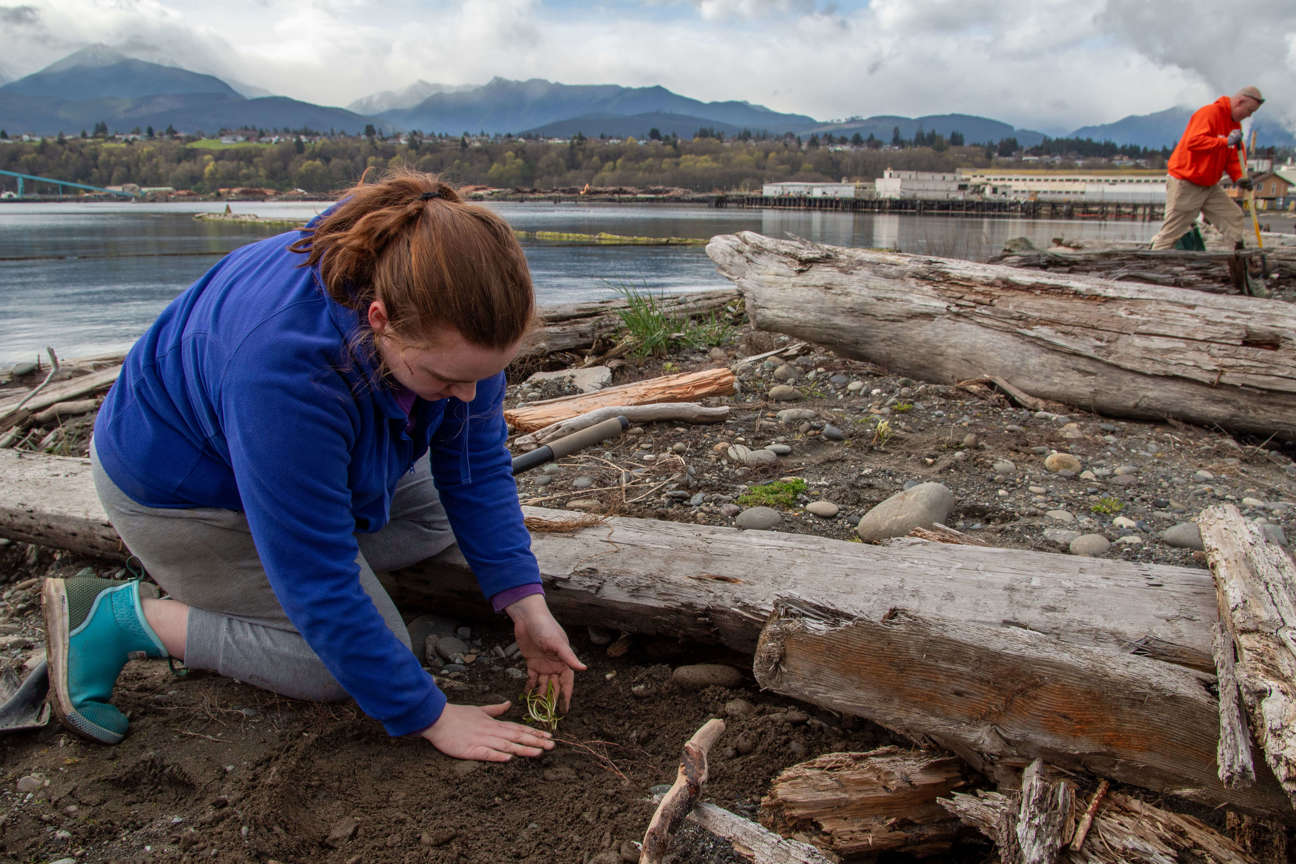
MRC Admin Specialist Amelia Kalagher finishes getting a plant settled in ideal microhabitat next to a beach log. Photo credit Tiffany Royal, Northwest Indian Fisheries Commission.
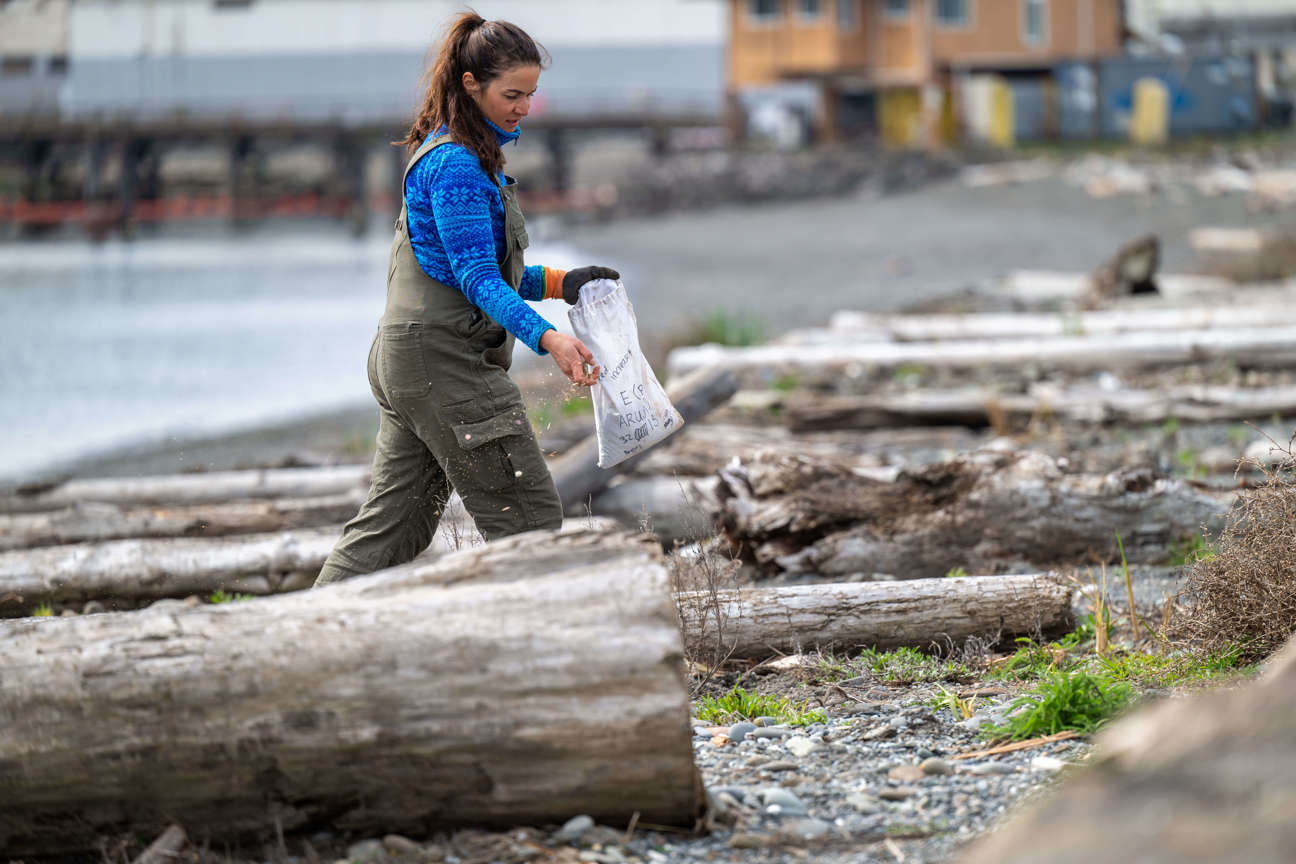
Allyce Miller, MRC Alternate Representative for the Lower Elwha Klallam Tribe, sows seed over the revegetation area.